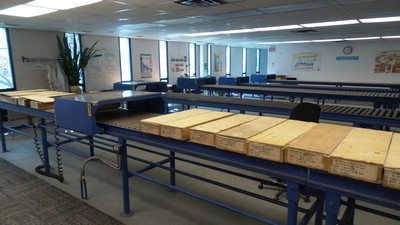Drilling, coring, and sampling of boreholes are all essential to petroleum exploration. As these core and cuttings samples never lose their value as exploration and research references, it is essential that they be acquired and stored.
In 1908, the Geological Survey of Canada established a Borings Division in Ottawa to store well cuttings and core samples from oil exploration wells drilled in Canada. In 1938, Alberta established a regulatory board with just one responsibility – to acquire and store well cuttings and cores.
In the 1950s, the Survey established a permanent presence in Calgary following the expanded interest in petroleum resources triggered by the 1947 discovery of oil at Leduc, Alberta. A major expansion of the Survey’s western and northern Canada activities led to the 1967 opening of the Institute of Sedimentary and Petroleum Geology (now GSC-Calgary) adjacent to the University of Calgary campus site.
The Survey’s core and cuttings repository in Calgary is a rock “library” patterned on the successful Alberta facility, and attracts many users. An estimated 48,000 core boxes and 23 million vials of cuttings are available for study from the four western provinces, Yukon, Northwest Territories, and the East Coast offshore.
Category: Rocks, Fossils, Minerals and Meteorites
Decade: 1960s
References


